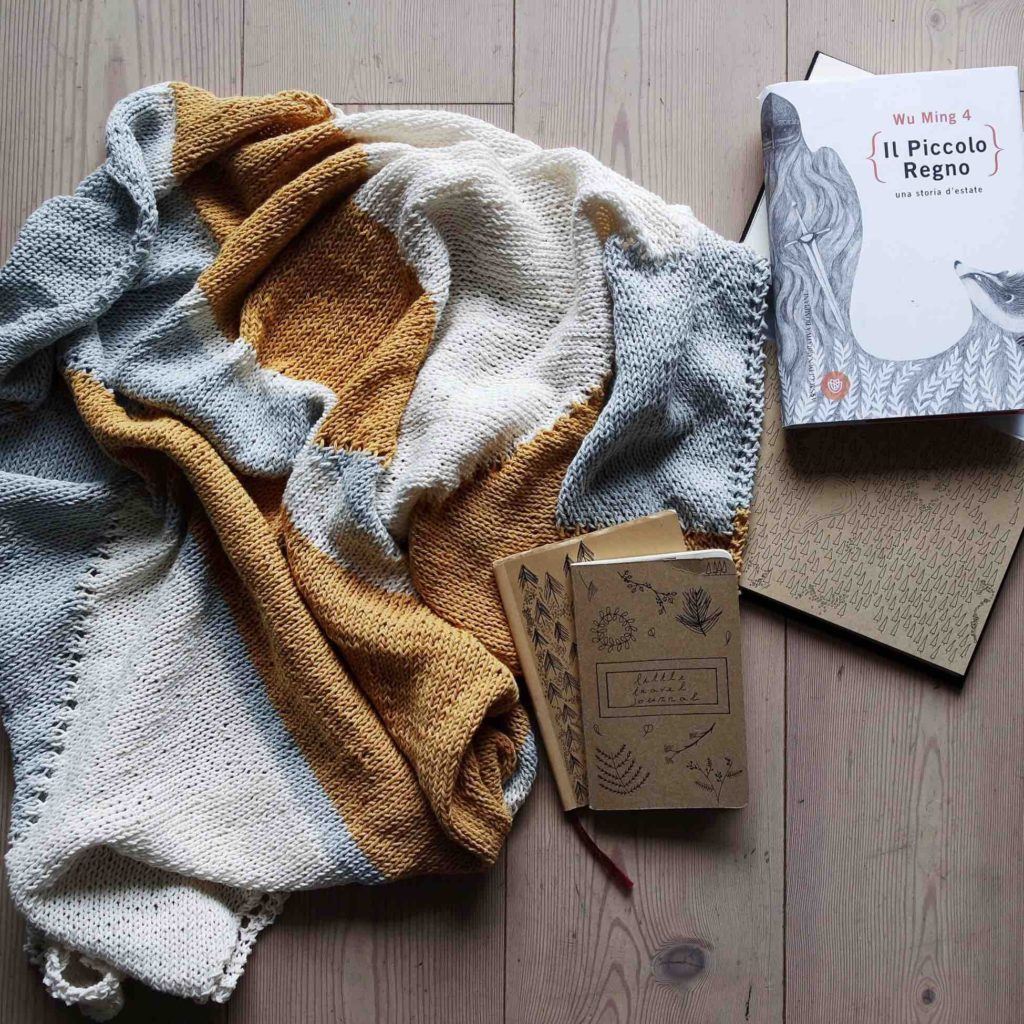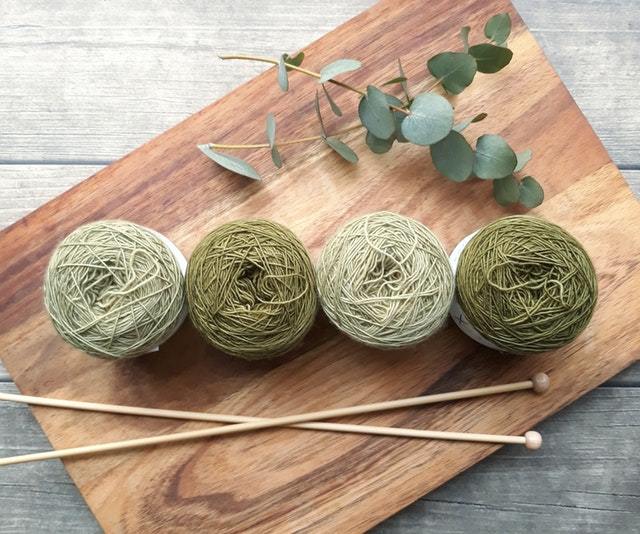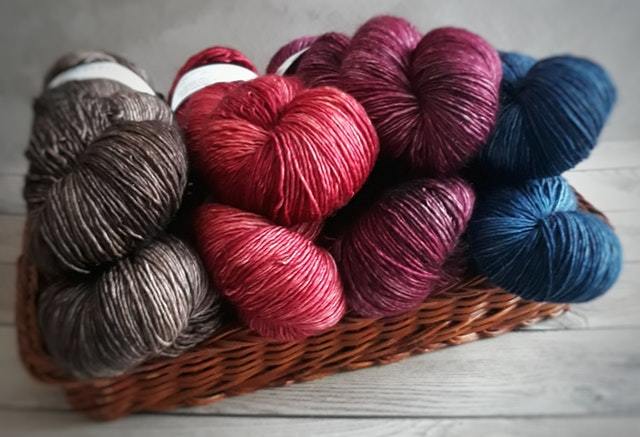Are you a knitter or crocheter, looking for a project that can easily comfort your loved ones in times of hardship? Then you’ve come to the right place.
Why not knit or crochet them a prayer shawl? This project is not only fun, but can also serve as an excellent gift, a religious symbol, or a helpful reminder.

Where do you start? Is it difficult? What are the key components of this shawl?
Let’s dive into all that and more, so you can develop your very own.
What is a Prayer Shawl?
What makes prayer shawls different from any other shawl? The thoughts and pure, comforting intention behind the making and giving of this accessory.
While the knitting itself may not differ from the creation of regular shawls, knitters will tell you that the process behind it is more meaningful than that.
Prayer shawls are intentionally easy to knit, so that the knitter can concentrate more on infusing healing thoughts and protective prayers into the stitches, instead of just focusing on a complicated pattern. Essentially, these shawls are the epitome of the phrase “it’s the thought that counts.”
Typically, a knitter prays over the shawl as they knit it, and later blesses it again just before they gift it away. This blessing can be done in a formal ceremony if you belong to a certain religion, or you can simply pray over the shawl and the person who receives it by yourself.
Despite its name, a prayer shawl is not exclusive to any particular religion. Anyone of any faith (or even lack thereof) can make or wear a prayer shawl, imbuing their own religious beliefs or prayers within the fabric, in the hopes that it comforts the person it’s intended for.
Prayer shawls can also be knitted, crocheted, woven, or worked in any way you want. They may have beads, bobbles, shells, fringe, or other bits woven along the ends, or they can be plain. The colors can also be as bright or as muted as you want.
During What Events Do You Gift Prayer Shawls?
A common misconception about prayer shawls is that they are not made for happy or positive events.
While this project is meant to be a source of comfort to the recipient in times of distress, you can also gift it a sign of encouragement or general affection.
You can give prayer shawls to those:

- Undergoing or recovering from illness or medical procedures.
- Going through a loss or stressful time.
- Getting married.
- About to give birth to or nursing a child.
- Celebrating a bridal or baby shower.
- Leading a ritual.
- Leading first menses or rites of passage.
- Ministering to others.
- Graduating from school.
- Celebrating a birthday, anniversary, ordination, or other holiday.
Incorporating Religion into the Shawl
You can knit or crochet prayer shawls with symbolic patterns or colors of yarn, specifically those which represent an important part of a person’s religion.
For instance, many Christians choose to use stitch patterns in combinations of three to represent the Holy Trinity. Some of the more common Christian stitch patterns include 3 x 3 ribbing and what is known as the Trinity Stitch.
Blocks of 3 stitches and 3 rows of knits and purls can also be alternated with one another to create an easy, meaningful knitting pattern.
Further reading: see our guide to seed stitch knitting.
Prayer shawls are much more common in Judaism, where they are traditionally called “tallits”. There are many different rules surrounding the overall design and construction of the piece, though many would consider a knitted tallit acceptable.
Tallits are typically made in blue and white with fringes, or knots, tied in a specific manner at each corner of the shawl. Groups will often meet at their Temple to knit healing prayer shawls for those in need.
Many faiths also use knit prayer shawls for weddings, as a symbolic garment of love and union.
Prayer Shawl Origins
Back in 1998, Janet Severi Bristow and Victoria Galo, two graduates of the 1997 Women’s Leadership Institute at The Hartford Seminary in Hartford, Connecticut, created a new ministry under the direction of Professor Miriam Therese Winter, MMS.
Their love of knitting and crochet, combined with their spiritual practice, led to the creation of the prayer shawl. Their process begins with saying prayers and blessings for the intended recipient, then continuing those prayers throughout the creation of the shawl.
Once they are finished, they offer a final blessing to the recipient before they send the shawl to them. This process may differ for others, but the sentiments should mostly remain the same.
It is very important to their ministry that you keep these origins honored and always in mind when creating your own prayer shawl. They insist on keeping their ministry a grass-roots effort, meaning that you should always knit these shawls with the intention of giving them away unconditionally.
They should never be sold to anyone. Unfortunately, due to the overwhelming response the site and their ministry have had over the years, they are unable to take any shawl requests at this time. Instead, they encourage people to visit their website to find a shawl ministry group in or near your area to help you out.

They have also noticed that some of their recipients have paid it forward by making prayer shawls of their own and passing it on to others. They encourage those who belong to a faith community but who do not have a shawl ministry group near you to introduce a ministry of your own in your church community.
Creating a Prayer Shawl Ministry
If you do plan to create a prayer shawl ministry in your community, then be sure that you are able to find a big enough space to accommodate a large group.
Check with your local library, community center, senior center, or continuing adult education center if you can’t get your church to host it.
It can also help to have a small, core group of knitters from the get-go to help you coordinate and administer how the ministry is run.
To gain more members, you can try placing an ad, flyer, brochure, sign-up sheet, or other publication in your church bulletin, newsletter, local newspaper, community center, library, senior center, or continuing adult education office.
It should have all the important information about your group, including the location where you meet, the dates and times you meet, and where they can contact you if they want to know more about your ministry.
This video shows an example of how to make a prayer shawl.
Where to Find Prayer Shawl Patterns
There are plenty of crafting websites that offer free prayer shawl knitting patterns online.
- Stitch & Unwind is an extensive knitting and crocheting blog with many free patterns and video tutorials, designed to suit novice and expert knitters and crocheters alike. Most of the site’s free prayer shawl knitting patterns and crocheting patterns can be found here.
- The Spruce Crafts is another fantastic arts and crafts site. They have easy tutorials on everything from DIY home improvement projects to kids’ crafts to all kinds of needlework. You can find their detailed tutorial on how to make your very own prayer shawl here.
- Ravelry is a community hub created exclusively for knitters, crocheters, designers, spinners, weavers, and dyers looking to share their love for needlework projects around the world. Users can offer their own patterns on various projects for free, compare project notes with friends, and much more. You can find one Ravelry user’s knit prayer shawl here.
- Interweave is self-described as one of the nation’s foremost art and crafts companies, offering its exclusive users many free sewing patterns and projects via e-mail, magazines, books, social media pages, television programs, and online videos. While you have to become a member to gain access to their free content, an Interweave membership also grants you access to all their exclusive content, including these three free prayer shawl knitting patterns.
- The New Prayer Shawl Companion: 35 Knitted Patterns to Embrace, Inspire, & Celebrate Life is a fascinating book that delves into the history behind the prayer shawl. It also provides essential advice on setting the mood for your knitting sessions, and how to properly give the shawl over to someone in need.
How to Knit a Prayer Shawl
Materials and Supplies
Knit Pattern
- Knitting needle size 11 or 13.
- 555 yards of bulky yarn in the color of your choice. Some yarns vary in their elasticity, which will affect your piece and knitting tension, so choose wisely.
Crochet Pattern
- Size M, N or P crochet hook.
- 740 yards of bulky yarn and 60+ stitches.
You can also use the recommended needle size listed on the label of your bulky yarn, adjusting either pattern to obtain the width you prefer.

Method
Knit Prayer Shawl
- Cast on either 54, 57, or 60 stitches in combinations of three. If you use size 11 needles and cast on 54 stitches, for instance, 3 skeins of slightly bulky yarn would be sufficient.
- If your yarn has a multicolored stripe, make sure the color sequence is correct when tying on a new skein. Be sure to tie on the new skein in the body of the shawl, instead of in an edge.
- For your first row, do a knit 3, purl 3 pattern to the end of the row.
- You should always start the row after with the opposite stitch of the previously ended one. If the first stitch is a knit, then start with a purl. Be sure you knit the purls and to purl the knits. It should not look like ribbing whatsoever. However, if you cast on 57 stitches at the start or make the pattern in multiples of 6s + 3 (added) stitches, you should always start with knit 3.
Crochet Prayer Shawl
- Chain 54 stitches (or your desired width) together.
- Chain 1, turn, then single crochet in each of the stitches to the end of the row.
- Chain 3 and turn.
- Double crochet on top of each single crochet, then repeat this two more times.
- Chain 1 and do 1 row of single crochet to the end of the row.
- Chain 3 and turn.
- Do 3 rows of double crochet. Repeat this pattern of 1 row single and 3 rows double to the end of the row.
- End with 1 row of single crochet and finish with fringe. Crocheting typically uses more yarn than knitting, so you may have to adjust the width and size of the hook, or use another 1/2 skein.

Completing the Shawl
- Knit (or crochet) the piece until it measures from wrist to wrist, which should be approximately 57 to 58 inches long.
- Use what you have left to cut the remaining fringe. You can also do this before using the last skein. Just divide the pile in half and then, while keeping them evenly spaced apart, slip-knot them to the ends.
- If your yarn is loosely wound, you may have to knot the fringe’s ends once you are finished, so it won’t unravel.
- You may also add beads and/or charms to the fringe. Another nice touch would be to enclose a tiny sachet of potpourri, scented with essential oil. However, the inclusion of this sachet is not recommended if you know the receiver is sensitive to fragrances, is pregnant, currently undergoing chemotherapy, or has emphysema or other chronic respiratory issues.
- Be sure you say some blessing, prayer, or wish over the shawl before handing it over, all while keeping the receiver in mind. It may also be a good idea to enclose an explanation as to why you chose specific colors, patterns, beads, or charms over others, as well as an additional blessing, prayer, or wish that the recipient can read in times of crisis.
Here’s a video with another example of a prayer shawl.
Conclusion
Prayer shawls can offer solace in times of either great distress or happiness.
The positive thoughts and prayers poured into every stitch truly make each piece a unique comfort, which can be cherished for many years to come.
What are your favorite prayer shawl patterns?
